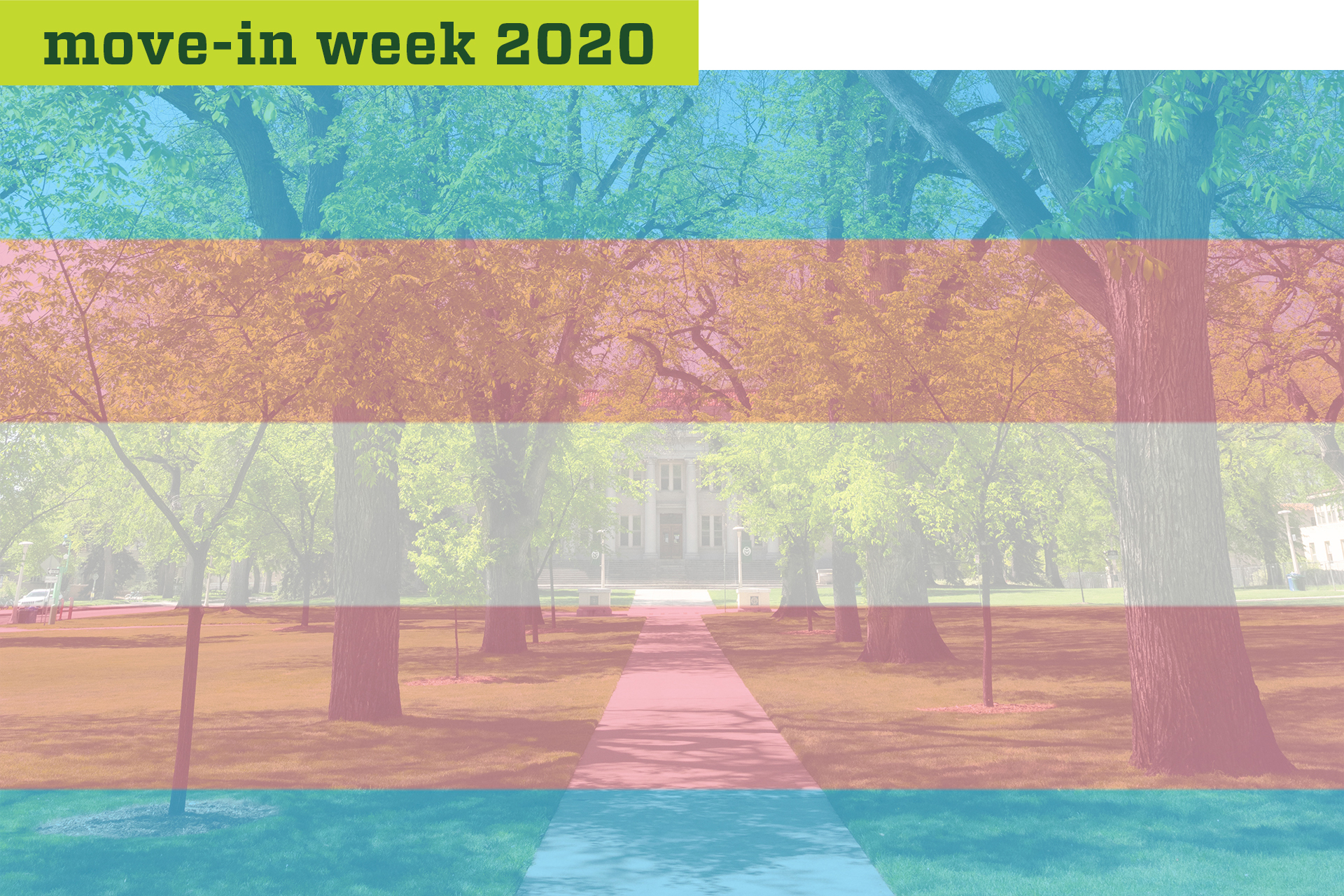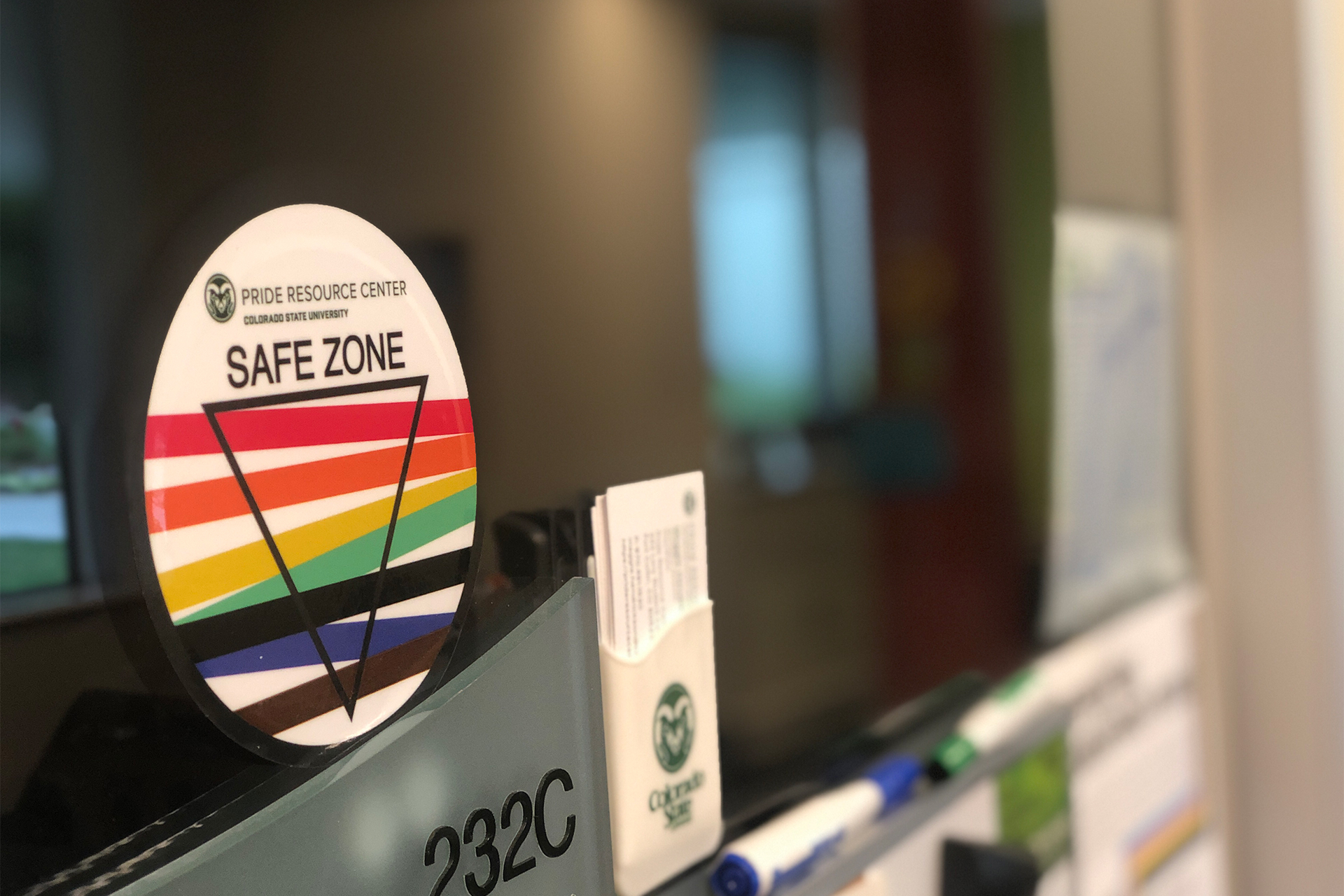
Colorado State University is committed to supporting Rams who identify as transgender and gender nonbinary, especially given that those employees and students often face significant challenges while navigating campus environments.
Over the past several years, in addition to creating programs and trainings that help educate our campus community about gender diversity, CSU has taken up several efforts to improve its systems and provide expanded support in critical areas.
CSU has elevated use of individuals’ preferred name and pronouns, dramatically increased the accessibility of all gender restrooms and focused on inclusive health care for transgender and nonbinary students.
Kathy Sisneros, assistant vice president for student affairs, said CSU has made a concerted effort to better support these students, improve advocacy on campus and make processes more gender inclusive. Sisneros pointed to the Trans and Non-Binary Oversight Committee’s efforts in working to foster an inclusive community.
“We are committed to working for campus-wide systemic change,” she said. “We have been working to support transgender and nonbinary folks within our processes and systems.”
Preferred names and gender markers
One area of focus is the use of a preferred name and gender marker in university systems, according to Marianna Walsh, the student information system support manager in the Registrar’s Office.
“We have a lot of systems and processes that pull name data from our Banner Student Information System, so we really had to take an intentional look where someone’s legal name is being used and why,” Walsh said. “That gave us an opportunity to improve some of our best practices for reporting and to use the name that they prefer.”
Walsh added that the university has improved students’ access to see how and where their name is going to be used. “Anywhere it is not a business necessity to have someone’s legal first name, we use the name that they share,” she said.
Most recently, Walsh said the university updated the legal gender/sex marker on RAMweb to recognize a nonbinary gender. While Walsh said agencies at the federal level still use the binary of “male/female,” CSU has created ways for students to accurately update their legal gender/sex marker to “X.”
Walsh said the reception of both these initiatives has been positive across campus. As of January 2020, she said one out of five CSU students, faculty, and staff had updated their preferred name in the system.
“This is especially important for our trans and nonbinary community members,” she said, “but these initiatives are also of value to our community as a whole. The reception for that has been great.”
Focusing on students
A 2019 study, published in the American Journal of Preventive Medicine, on student mental health from college campuses across the country spotlighted the issues many transgender and nonbinary students face.
The study, which examined responses of more than 65,200 students from 71 U.S. institutions, found nearly 80% of transgender, gender-queer and gender-nonconforming students reported having at least one mental health issue.
At CSU, students face similar struggles. As Dora Frias, director of the El Centro, and Meg Skeehan, chair of the Classified Personnel Council, explained in a piece for SOURCE in 2019, transgender and nonbinary students face mental health issues at far greater rates than their peers.
To help, the CSU Health Network has long provided gender-affirming care and resources for students.
Another area of focus driven in large part by the needs of the trans community involved creating all gender restrooms on campus, which have been incorporated into the codes and standards for all new and remodeled buildings.
These single-stall restrooms increase access to safe and comfortable facilities for transgender and nonbinary people and many others. Restrooms are often especially important for those who require privacy to maintain medical devices and those who need or provide assistance to others, including small children and those with disabilities.
CSU’s interactive campus map includes the locations of the nearly 300 all gender restrooms on campus, and is updated as more are added.
Acceptance on campus

The Pride Resource Center hosts Safe Zone training sessions to help CSU faculty and staff learn ways to support the LGBTQ community.
Opened in 1998, the Pride Resource Center provides support for all CSU community members to explore and increase their understanding of sexual/romantic orientation, gender, and identity intersection.
Maggie Hendrickson, assistant director of the center, said while progress is being made on campus, it’s critical for the CSU community to look beyond Fort Collins to understand that there is more to be done to support the transgender and nonbinary community. Hendrickson pointed to the Trump administration’s June decision to reverse transgender protections involving health care and insurance.
“There have been policy changes on the federal level that impact the trans and nonbinary community,” Hendrickson said. “So it’s helpful for folks to pay attention to what’s happening because it has real impact on our students. It contributes to their fear of not being accepted on campus.”
Cori Wong, assistant vice president for gender equity in CSU’s Office of the Vice President for Diversity, said there are also everyday things everyone on campus can do to be more inclusive.
“Trans inclusion is something that everybody can do,” Wong said. “Whether it’s reviewing for gendered images and content in our materials, using gender-neutral language, or sharing pronouns and honoring people’s identities, every single person can do it; that’s what we’re looking for on a systemic level.”
Hendrickson added that CSU has been effective in removing barriers to create a more inclusive environment and recognizing the updates to preferred names and gender markers in university systems.
However, Hendrickson said there’s still work to be done.
“We’re still not perfect,” they said. “But I’m really grateful for the ways that a lot of staff and faculty are pushing for inclusion.”
Fostering an inclusive campus community
Maggie Hendrickson, assistant director of CSU’s Pride Resource Center, offered six tips for a more inclusive campus community.
1. Seek out different ways to learn about trans and nonbinary identities.
Hendrickson said there are lots of resources available for people to learn more about trans and nonbinary identities. Hendrickson recommended reading works by writer and activist Janet Mock, the author of Redefining Realness: My Path to Womanhood, Identity, Love & So Much More.
The Netflix documentary Disclosure: Trans Lives on Screen is another resource that Hendrickson recommended. Additionally, Hendrickson pointed to two TEDxCSU Talks: “Black Trans* Lives Matter” by D-L Stewart and “Are you a Man or Woman? …I’m BLACK” by Patrice Palmer. They also said the Pride Resource Center will continue its Safe Zone trainings virtually.
2. Reflect on intentions of allyship.
Many times when inclusion comes to mind, Hendrickson said people think from an accommodation standpoint rather than an inclusive starting place. “Too often it’s: ‘If a trans person comes in, we’ll figure out how to support them,’ versus anticipating there will be trans people likely participating,” Hendrickson said.
Hendrickson pointed to the example of sharing pronouns as a starting-block for allyship with the trans community, encouraging people to be proactive in introducing themselves by sharing pronouns. “It signals to trans and nonbinary people that we expect them there, and we want them there rather than being an afterthought.”
3. Think about how gender appears in language.
Hendrickson said people oftentimes make gender-based assumptions based on people’s names, voices and appearance and use language such as ma’am or sir, boyfriend or girlfriend, etc. Some people may assume a level of formality or politeness with salutations like Mrs. or Mr., but fail to realize it’s not polite to misgender someone.
“There are lots of things you can say that are genderless,” Hendrickson said. “Parents, person, friends — words like that. A lack of awareness for how gender is steeped in language and nomenclature can signal to a trans person that they are not recognized by the speaker, and that can be something that makes a trans person want to disconnect.”
4. Think about ways to be receptive and enthusiastic in interactions with trans and nonbinary people.
Hendrickson posed a question: “If your child, classmate or peer or friend came out as trans or nonbinary how would you react?”
Hendrickson said people sometimes tend to it shrug off and say it doesn’t matter. “But it’s a really scary thing for a trans or nonbinary person to do, so warmth and enthusiasm is important.”
5. Provide and inform trans and nonbinary people about available resources.
Hendrickson said another way of allyship is to help trans and nonbinary people learn about the resources that are available to them at CSU.
6. Think about ways to support existing programs and centers at CSU.
Hendrickson said another form of allyship is through support, whether that means volunteering at the Pride Resource Center or through supporting scholarships and philanthropy.
“LGBTQ students use more financial aid than other populations,” according to Hendrickson. “So, we have our scholarship as well as an emergency fund that we welcome donations to that help our trans and nonbinary students stay in school and graduate.”